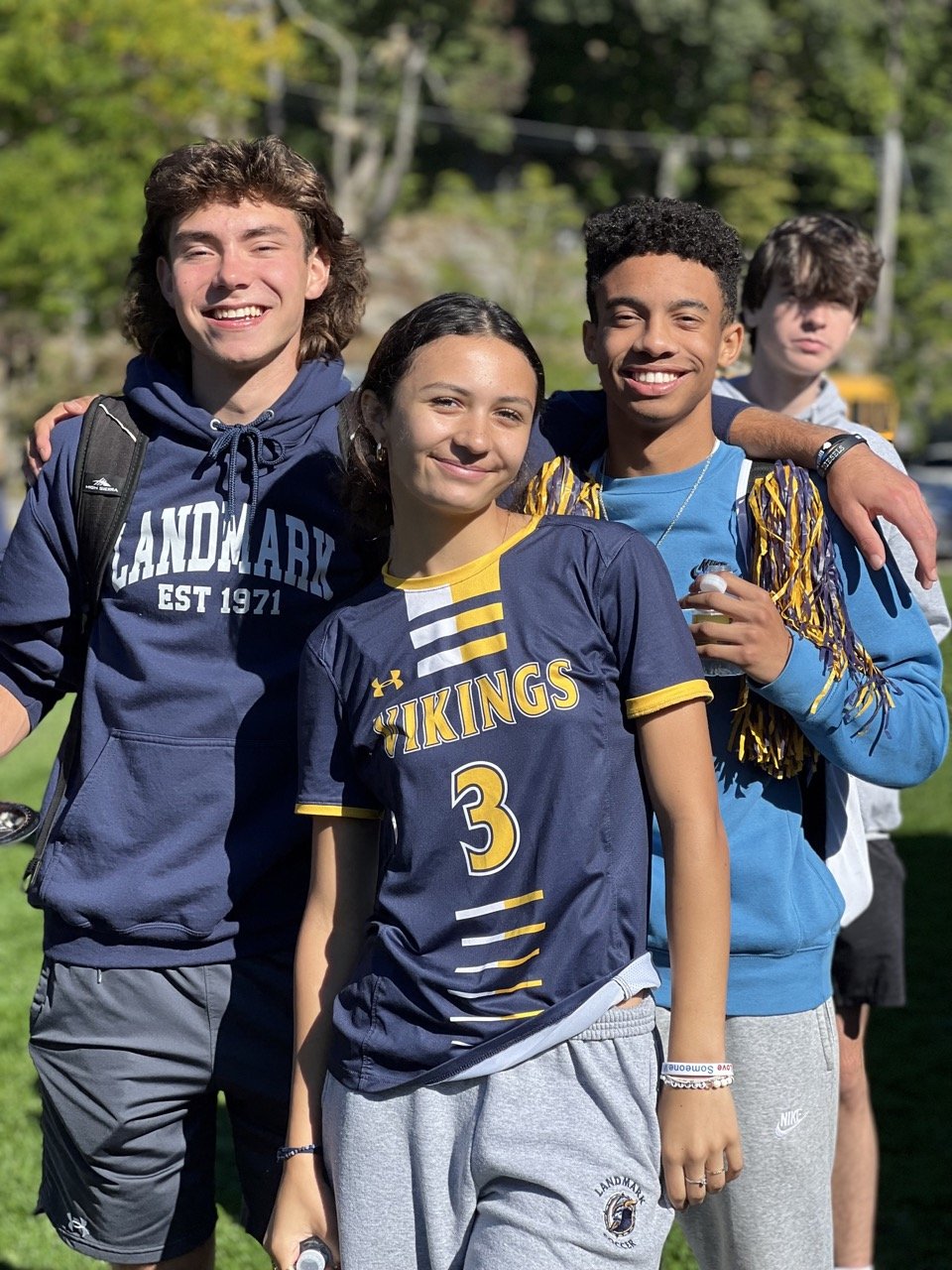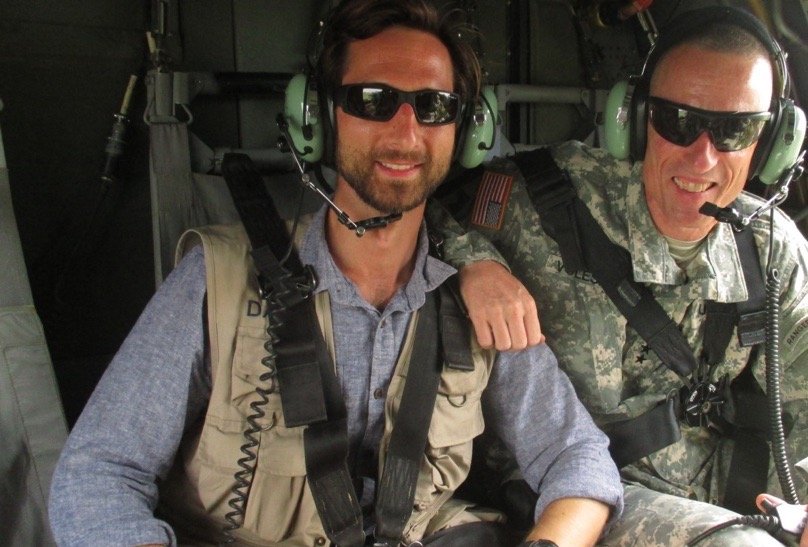- Our School
- Our Advantage
- Admission
- Elementary•Middle School
- High School
- Summer
- Giving
- Parent Resources
- For Educators
- Alumni
« Back
A Guide to Early Markers of Dyslexia
March 15th, 2020

This article originally appeared on PsychologyToday.com.
Along with parents and caregivers, early educators lay the foundation for children’s lifelong learning. One of their most essential roles is to provide children with a solid start in reading development.
For too many children, however, reading acquisition is a struggle. Many demonstrate the early markers of dyslexia, a language-based reading disability that historically affects 10-15% of children (Cortiella & Horowitz, 2014).
Here’s an abbreviated definition from the International Dyslexia Association (IDA) (2002):
"Dyslexia is a specific learning disability that is neurobiological in origin. It is characterized by difficulties with accurate and/or fluent word recognition and by poor spelling and decoding abilities. These difficulties typically result from a deficit in the phonological [sound processing] component of language that is often unexpected in relation to other cognitive abilities and the provision of effective classroom instruction."
Cutting-edge neuroimaging studies in infants and toddlers show that dyslexia is associated with structural alterations in the portions of the brain that support reading (Ozerno-Palchik & Gaab, 2016). But despite dyslexia's neurobiological roots, a bevy of misconceptions remain. Dyslexia is not directly a comprehension problem, though children who struggle with reading may develop comprehension problems. Nor is dyslexia caused by visual deficits. Simply put, dyslexia is not seeing words and/or letters backwards, reversed, jumbled, or transposed. In fact, a 2009 paper from the American Academy of Pediatrics states emphatically that vision problems are not the cause of dyslexia.
As advocated by professional organizations such as the International Dyslexia Association, the International Literacy Association, and the Learning Disabilities Association of America, early prediction and identification of children with dyslexia is essential. As numerous states roll out legislation outlining plans for early screening and effective instruction, early childhood educators and parents can serve as partners in early identification.
What to Look for Early On
When parents and early childhood educators understand dyslexia as a deficit in a child’s ability to understand sound structures, they are better prepared to observe some of the early warning signs. Phonological awareness is a fundamental literacy skill; it enables children to take a stream of oral language and divide it into individual words, words into syllables, and syllables into individual sounds.
Without firm phonological awareness skills, children may struggle to match letter names to their corresponding sounds (e.g. the letter name is M and its corresponding sound is /m/), struggle to segment words into their parts (e.g. cowboy broken into cow-boy), and struggle to blend individual sounds into larger words (e.g. /b/ /a/ /t/ into bat) or manipulate sounds (e.g., what’s bat without the /b/ at the beginning?).
We now know that the precursors of dyslexia are visible as early as age 3, demonstrated in weakness in phonological skills, letter knowledge, rapid naming, and working memory (Gaab, 2017). None of these behaviors stands alone in a diagnosis of dyslexia, but the following are early markers of dyslexia.
Family and Medical History Relevant at All Ages
- May have a family history of dyslexia
- May have Attention Deficit Disorder/Attention Deficit Hyperactivity Disorder (ADD/ADHD)
- May have developmental language disorders
- May have dyspraxia, a disorder in developmental coordination
Potential Signs of Dyslexia in Toddlers and Preschoolers
- May have difficulty pronouncing words (e.g., busgetti for spaghetti, aminal for animal)
- May be unable to recall the right word
- May have trouble recognizing and remembering rhyme
- May have delays in speech development or production
- May use ambiguous language or struggle to provide specific words
- May have difficulty learning or remembering names of letters
- May not be able to recognize the letters in his/her own name
Potential Signs of Dyslexia in Kindergarten and Grade 1
- May have trouble manipulating portions of words (e.g., "Say birthday. Now say birthday without saying birth")
- May have pervasive baby talk
- May be unable to sound out simple words like map, bat, pig
- May have trouble identifying sounds in a word (e.g., “What is the last sound that you hear in mop?”)
- May have trouble identifying letter sounds and names (e.g., “What letter is this? What sound does it make?")
- May make oral reading errors that are disconnected from the words on the page
- May give spelling/writing that is usually difficult to decipher
- May struggle to blend sounds together (“Can you push these sounds together for me to tell me the word they make? /c/ /a/ /t/")
Potential Signs of Dyslexia in Second Grade and Beyond
- May show frustration, such as avoiding reading, complaining that reading is too hard
- May have difficulty with handwriting
- May have difficulty with spelling
- May have difficulty decoding unfamiliar words
- May demonstrate slow or laborious reading
- May struggle to recall or understand what s/he reads
- May have difficulty remembering high-frequency words
- May need additional time providing oral responses to questions
As many states and school systems adopt universal early screenings for dyslexia, teachers must collect classroom data, document student progress, and conduct assessments that help identify children in need of more comprehensive evaluations. These observations and teacher knowledge provide important insight for the literacy specialists, reading clinicians, and school psychologists who can provide formal diagnoses of dyslexia. And don’t forget, parents can help.
References
American Academy of Pediatrics, Council on Children with Disabilities, Marican Academy of Ophthalmology, American Association for Pediatric Ophthalmology and Strabismus, & American Association of Certified Orthoptists (2019). Joint statement – Learning Disabilities, Dyslexia, and Vision. www.pediatrics.org/cgi/doi/10/1542/ped.2009-1445. DOI10.1542/ped.2009.1445
Cortiella, C. & Horowitz, H. (2014). The state of learning disabilities: Facts, trends and emerging issues. New York: National Center for Learning Disabilities.
Gaab, N. (2017). It’s a myth that young children cannot be screened for dyslexia. Baltimore, MD: International Dyslexia Association.
International Dyslexia Association (2002). https://dyslexiaida.org/definition-of-dyslexia/
Ozernov-Palchik, O. & Gaab, N. (2016). Tackling the ‘dyslexia paradox’: Reading brain and behavior for early markers of developmental dyslexia. Cognitive Science.
Authors
Molly Ness, Ph.D., is an associate professor in the Graduate School of Education at Fordham University. She previously directed the McGuffey Reading Clinic at the University of Virginia. She is the author of four books and numerous articles. In addition to writing about teachers’ knowledge of dyslexia, her forthcoming publication encourages pediatricians to be advocates in the early identification of children with dyslexia. She can be reached at [email protected] and www.drmollyness.com.
J. Richard Gentry, Ph.D., is an independent researcher, author, and educational consultant and a former university professor, reading center director, and elementary school teacher. He is the author of 17 books, including the recently released Brain Words: How the Science of Reading Informs Teaching (Stenhouse, 2019), co-authored with Canadian psychologist Gene Ouellette. Richard speaks nationally and internationally at educational conferences and blogs for Psychology Today. He earned his elementary education degree from the University of North Carolina-Chapel Hill and a Ph.D. in reading education from the University of Virginia. Dr. Gentry currently resides in Mobile, Alabama, and can be reached at [email protected]. For more visit his website www.jrichardgentry.com.
Posted in the category Learning Disabilities.








.jpg?v=1652115432307)











